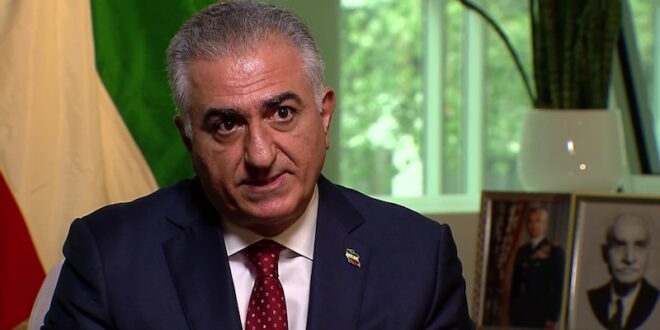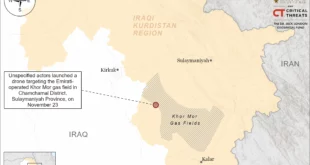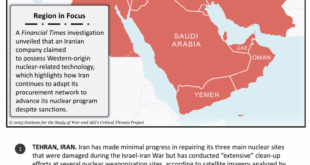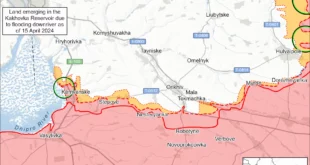On January 15, 1979, Iran’s Shah, Mohammad Reza Pahlavi, and his family left the country for the last time. After a short period of wandering in Egypt, Morocco, the Bahamas, and Mexico, during which the last shah passed away, losing his battle with cancer, the Pahlavis settled in the United States. In America, they became a relic of a bygone era, appreciated only by a certain generation in the Iranian diaspora. The family suffered some tragedies; two of his children died by suicide. Overall, the family maintained the façade of a royal family without a kingdom or people behind them, ridiculed by some, respected by others, but mostly ignored in their irrelevance.
In the past decade, there were several efforts to rehabilitate the image of the former shah’s son, Crown Prince Reza Pahlavi. The sixty-two-year-old man, who has lived off his family fortune, and never held any official job or position, tried to claim the leadership of an imagined Iranian alternative in exile. Diaspora television programs constantly brought him on to speak on the conditions in Iran, the solution to the country’s problems, and he—on his part—was happy to share it. The only political resonance he had beyond those circles were with hard-core hawkish “regime-change” Republicans and Democrats who dreamed of the day they could restore the monarchy on the ruins of the Islamic Republic.
When the Mahsa Jina Amini protests started in Iran in September 2022, the response was unlike anything Iran-watchers had seen before. Brave Iranian women fiercely challenged the hijab laws, under the banner of “Zan, Zandegi, Azadi” (women, life, freedom) and took to the streets in thousands, Iranian men and women confronted the regime forces, clerics, and anyone who represented the state order. Mass protests broke out across the country and involved Iranians of every social class, every ethnicity, and every region. The diaspora communities responded as well with rallies in support of the Iranian women, demanding justice for Amini, and all the others that were arrested, tortured, and executed in the aftermath of her death. Huge rallies were held in Los Angeles, Toronto, New York, Washington, Munich, Berlin, Paris, and more. That moment presented an opportunity. Iranians could not have been clearer in their message that they were fed up with the Islamic Republic, their sacrifice made it crystal clear. It was the time for the Iranian diaspora to meet the challenge and unify the different political forces to present a coalition that could represent the majority of the Iranian people, in Iran and outside.
On Friday, February 10, 2023, after almost five months of continuous protest eight leaders of different strokes gathered at Georgetown University to present a united front of the opposition abroad. Four participated virtually—the renowned human rights activist and Nobel prize laureate, Shirin Ebadi, actress and activist Golshifteh Farahani (who also spoke on behalf of the former captain of the Iranian national soccer team, Ali Karimi), and Abdullah Mohtadi, the leader of the Kurdish Komala party (that operates from Iraqi Kurdistan). The other four who were present in the DC neighborhood were the activist and actress Nazanin Boniadi, the activist Masih Alinejad, Hamed Esmaeilion who lost his daughter and wife in the Ukraine Airline flight that was shot down by the Revolutionary Guards in January 2020, and the Crown Prince Reza Pahlavi, as the presumed leader of the pack. The message was that there, on that stage, monarchists and leftists, religious and secular, leftists and right-wingers can come together to overthrow the Islamic Republic and establish something new in its place.
But what would that new order look like?
The leaders agreed on general lines of what their vision for Iran would look like, and maybe it was impossible at that point to say anything beyond it, but it did not go far beyond defining Iran as a liberal democracy. What does it mean for Pahlavi, who said that he might or might not get back to the throne? What does it mean for Mohtadi and the ethnic and religious minorities? What checks and balances would Shirin Ebadi like to see in the new government? how would the transition work? What is the place of the West in this movement? These questions are left open.
It is useful to think about the 1979 Revolution in terms of the efficiency of the movement and the messages. Back then there were many different factions with different visions and hopes, but they had accepted the leadership of one (which turned out to be detrimental for the country, and each group had different ideas of what Ayatollah Khomeini’s role would be after the revolution), they had clear priorities for the political system.
In the months leading to that moment at Georgetown in February 2023, a social media campaign was launched aimed at establishing the status of Pahlavi as the leader of the movement. He appeared on almost every news channel to claim that between a secular democratic republic and the restoration of the monarchy, he prefers the former over the latter (unless, of course, the people of Iran will ask him back to the throne). But while he does not ask to be addressed as crown prince, he obviously has not given up this title. In the invitation to that event in Washington, D.C., the English version had him as “His Excellency,” but the Persian had him as the Shahzadeh, Persian for “crown prince.” It created confusion where there should have been none.
It is not easy to unify such a diverse, divided, political community as the Iranian diaspora. Each group comes with different traumas from different periods and a range of experiences. But the easiest way to direct the political imagination at that moment was towards the re-establishment of the Pahlavi state. Reza Pahlavi has name recognition, of course, and waves of romantic memories might have been enough to mobilize segments of the diasporic communities. And as if to show that the vision for the future relies on the past, Pahlavi in a press conference said that Iran would welcome Israeli water experts to resolve the severe water issues of Iran. To be fair, Iran has faced crises over water supply, irrigation, purification, and more, and this is one of Pahlavi’s favorite talking points. However, who was the intended audience of that statement? To the people that took to the streets in Iran at that time? I would argue that this was intended to the ears in nearby Washington, D.C., to show that one of the most explosive conflicts in the Middle East, between Iran and Israel, would be resolved overnight if he returns to power, perhaps with American assistance.
There is, however, something bizarre in him making this statement at that specific moment. Israel is presently governed by an extreme far-right coalition of parties and politicians. Moreover, this government is losing support by the minute as huge protests have taken place in Israel for the past several months. This is a coalition that lives off the escalation of the conflict with Palestine, and targets the Supreme Court in order to do away with the little checks and balances it still has. This is the coalition that made not only Saudi Arabia step back from a love affair in the making, but also the United Arab Emirates and other Abrahamic Accord signatories question the wisdom of the usefulness of close relations with Israel.
There is also another thing to consider. If until not so long ago one of the popular chants in Iran was “Nah Shah mikhohim, Nah Rahbar; Nah bad mikhohim nah badtar” (we don’t want the Shah, we don’t want the [Supreme] Leader; we don’t want bad, we don’t want worse), the hatred and anger towards the Islamic Republic make the enemy’s enemies shine in brighter light and make the shah’s dictatorship pale compared to the system the Islamic Republic of Iran perfected. Most Iranians today don’t have a living memory of the shah’s regime, and if the Islamic Republic of Iran hates the Pahlavi monarchy and Israel, the average Iranian might think that maybe these two are eventually good things.
But this alone cannot sustain a revolutionary or any political movement. Consider that the notorious Evin prison, which has become the symbol of tyranny, was built for these exact purposes under Mohammad Reza Shah. The SAVAK, the secret police that was in charge of spying on political dissidents, domestic intelligence, and counterintelligence was officially dismantled following the 1979 Revolution, but in fact, the SAVAK transitioned into the intelligence services of the Islamic Republic. One example, out of many, of the cruelty of the shah’s regime can be found in the memoir of Meir Ezri, the former Israeli ambassador to Iran, who wrote: “in one of the days, some 150 political dissidents were boarded on helicopters and were dropped to the horrible death into the water of the great Salt Lake, southeast of Qom.”
While most Iranians were born into the Islamic Republic and never knew the Shah’s regime, these stories were passed down from generation to generation. During the Georgetown event in February 2023, Iranian social media had a field day, and one of the tweets that got much attention was from Pardis Sabeti who posted a photo of her family celebrating the launch of the new opposition. The caption reads: “44 years ago today, our native country fell into darkness. Hoping this year brings light and solidarity #zanzendegiazadi.” Her father, in the photo too, is Parviz Sabeti, one of the heads of the SAVAK, a role that arguably consolidated the opposition to the Shah some forty-four years earlier.
Fast forward a couple of months later, the crown prince decided to take his family on a state visit to Israel. The same Israel that is now embroiled in anti-government protests, the one whose prime minister has not been invited to the White House during this government, or to any European capital, this was the destination Reza Pahlavi chose. He was invited and accompanied by none other than the Israeli intelligence minister, Gila Gamliel, an insignificant politician who sought to curry favor with Netanyahu and was in charge of this poorly orchestrated visit. Pahlavi, on his part, renewed his vow to make Iran and Israel allies again. He was guest of honor in the Holocaust Memorial Day ceremonies, visited the Western Wall, and didn’t bother to visit the Haram al-Sharif a few meters from there or to mention the Palestinians even in passing (something that his father, at least, was consistent on). He talked again about the Israeli water experts that would be invited to Iran, and the close collaboration that would surely come. Days later, the opposition movement fell apart quite rapidly. Some stressed that the visit to Israel is not the cause. It’s enough to see the sarcasm, jokes, and anger in the Iranian networks to understand that this visit didn’t contribute at all to the feeling that Pahlavi is the leader of anything, let alone, a unified opposition movement.
Interestingly, a few days after the visit thirty-two members of the Knesset, from most of the parties in the house, signed a letter urging the foreign minister to support Azeri separatism in Iran. The kind of backlash against this letter made them retract it; also, the irony of those members of the Knesset caring so much for the rights of the oppressed minority was probably lost on many.
Iran’s opposition movement cannot be built on memories of the political imagination from four or five decades ago. In order to be effective, the leadership must come from within Iran and with the moral and logistical support of the diaspora, but it cannot go back to inexperienced political leaders with questionable credibility.
 Eurasia Press & News
Eurasia Press & News



